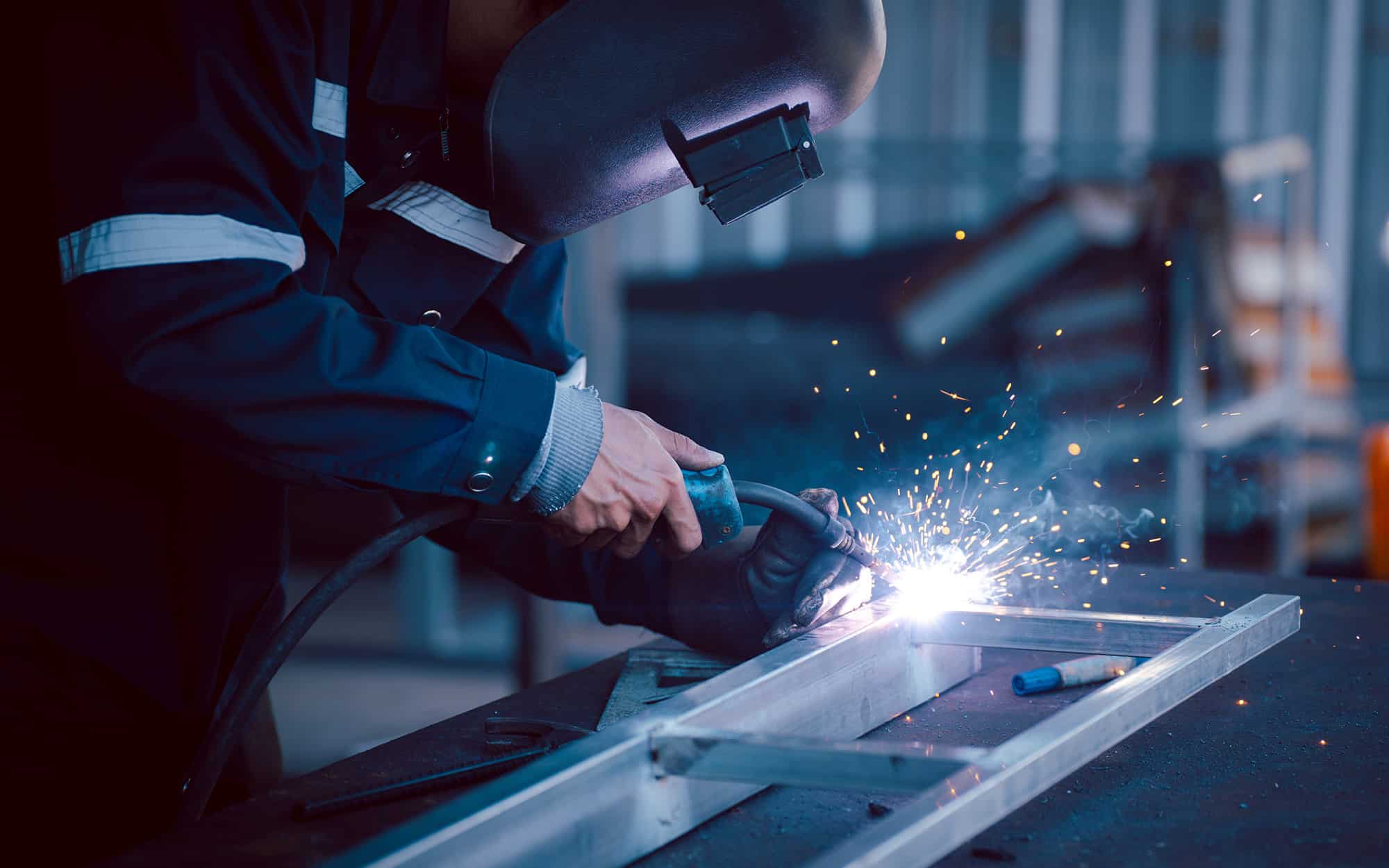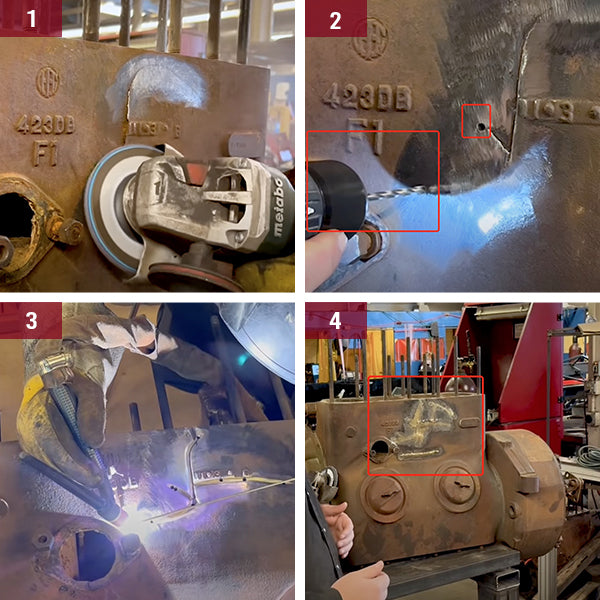Usual Welding Fixing Issues and Exactly How to Address Them Efficiently
Welding fixings usually encounter a series of problems that can endanger the integrity of the last product. Common issues include insufficient penetration, porosity, and imbalance, amongst others. Each issue provides one-of-a-kind challenges that call for particular techniques for resolution. Recognizing these problems is essential for welders intending to improve their skills and end results. This discussion will certainly explore these typical welding fixing concerns and reliable methods to resolve them.
Inadequate Infiltration
Poor infiltration occurs when the weld metal fails to fully fuse with the base product, resulting in weak joints and possible structural failures. This problem frequently comes from inadequate warm input, inaccurate electrode angle, or improper welding rate. Welders may run into insufficient penetration due to a mistake of the necessary criteria for a certain material thickness or kind. In addition, contamination on the base material's surface can impede effective bonding, intensifying the trouble. To deal with inadequate infiltration, welders must guarantee appropriate settings on their equipment and keep a clean job surface. Normal inspection of welds is suggested to identify any deficiencies early, enabling for timely modifications and the avoidance of jeopardized architectural honesty in bonded assemblies.
Porosity
Porosity is a common problem in bonded joints that materializes as small gas bubbles trapped within the weld steel. This defect can jeopardize the integrity of the weld, causing decreased stamina and potential failure under tension. Montana Mobile Welding and Repair Welding. Porosity generally develops from contamination, dampness, or inappropriate welding methods, which permit gases to run away into the molten weld pool. To deal with porosity, welders should ensure correct surface area preparation, maintain a clean workplace, and make use of ideal welding specifications. Furthermore, picking the right filler material and securing gas can minimize gas entrapment. Normal inspection and testing of welds can help determine porosity early, ensuring timely rehabilitative actions are taken, therefore preserving the top quality and reliability of the welded framework
Misalignment
Misalignment in welding can occur from different elements, including inappropriate arrangement and thermal development. Recognizing the origin is vital for reliable resolution. Several modification strategies are offered to realign elements and ensure structural honesty.
Reasons for Imbalance
Welding misalignment frequently originates from a selection of underlying problems that can jeopardize structural stability. One key cause is inappropriate fit-up of elements before welding, which can cause spaces and uneven surface areas. Variations in thermal development throughout the welding procedure can additionally lead to distortion, particularly if the materials being signed up with have various coefficients of growth. In addition, insufficient fixturing and securing may fall short to hold parts safely in location, leading to movement during welding. Badly conserved tools, including welding machines and devices, might introduce disparities in the weld bead, additional adding to misalignment. Driver error, stemming from insufficient training or experience, can additionally play a considerable function in developing misaligned welds.

Modification Methods Available
Resolving misalignment properly requires a combination of restorative strategies tailored to the details problems handy. One typical method is using jigs or components to hold components in the appropriate position throughout welding, making certain regular placement. In addition, preheating the products can help in reducing distortion and enhance fit-up. For significant imbalance, mechanical adjustment techniques, such as making use of hydraulic jacks or clamps, can be utilized to correct the placement prior to welding. Post-weld heat therapy might likewise be necessary to eliminate stresses caused by misalignment. Cautious inspection and adjustment during the setup stage can avoid misalignment issues from ending up being substantial issues, promoting a smoother welding process and improving general structural integrity.
Distortion
Distortion is a typical obstacle in welding that can arise from numerous aspects, including irregular home heating and air conditioning. Recognizing the root causes of distortion is vital for carrying out efficient avoidance methods. Addressing this problem not just improves architectural integrity but additionally boosts the overall high quality of the weld.
Root causes of Distortion
When subjected to the intense warmth of welding, products often undergo adjustments that can lead to distortion. This sensation largely arises from thermal growth and tightening during the welding procedure. As the weld area warms up, the product expands; upon air conditioning, it acquires, which can develop internal stress and anxieties. Additionally, uneven heating throughout a work surface can exacerbate these anxieties, causing bending or flexing. The kind of product additionally plays a substantial duty; steels with differing thermal conductivity and coefficients of development may respond differently, bring about unforeseeable distortions. Inadequate joint style and insufficient fixturing can contribute to misalignment throughout welding, enhancing the possibility of distortion. Comprehending these causes is crucial for efficient welding repair and prevention approaches.
Prevention Techniques
Reliable prevention techniques for distortion throughout welding concentrate on regulating warm input and ensuring appropriate joint layout. Preserving a regular heat input aids to minimize thermal expansion and contraction, which can result in distortion. Making use of strategies such as preheating the work surface can likewise reduce the temperature level gradient, promoting consistent heating. Furthermore, selecting appropriate joint layouts, such as T-joints or lap joints, can enhance security and decrease anxiety focus. Executing appropriate fixturing to safeguard the workpieces in place additionally help in maintaining positioning during the welding process. Staggered welding series can distribute warm more uniformly, preventing local distortion. By applying these strategies, welders can greatly decrease the probability of distortion and enhance the general top quality of their welds.
Breaking
Breaking is a common concern come across in welding repair work, typically resulting from different elements such as incorrect air conditioning rates, product selection, or insufficient joint prep work. The event of cracks can significantly jeopardize the integrity of the weld, causing potential failures throughout operation. To resolve this problem, welders should first assess the source, guaranteeing that products are suitable and suitably chosen for the particular application. In addition, controlling the air conditioning price during the welding process is vital; quick air conditioning can cause anxiety and lead to fracturing. Correct joint layout and preparation also add to lessening the risk. Implementing these approaches can improve weld top quality and durability, ultimately decreasing the likelihood of splitting in ended up weldments.

Incomplete Blend
A significant problem in welding repair work is incomplete fusion, which happens when the weld metal investigate this site does not effectively bond with the base material or previous weld passes - Montana Mobile Welding and Repair Fabrication. This problem can result in weaknesses in the joint, potentially compromising the stability of the bonded structure. Factors adding to insufficient fusion consist of not enough warm input, inappropriate welding strategy, and contamination of the surfaces being joined. To address this concern properly, welders must assure appropriate pre-weld cleansing and surface area prep work, as well as change their welding specifications to attain appropriate penetration and blend. Normal inspection during the welding procedure can also aid identify incomplete blend early, enabling prompt restorative actions to boost the overall high quality of the weld
Overheating
While welding repair services can improve architectural honesty, overheating presents a substantial challenge that can cause product deterioration. Extreme warm throughout welding can alter the mechanical buildings of steels, leading to minimized toughness, increased brittleness, and bending. This phenomenon is specifically critical in high-stress applications where structural dependability is extremely important. Determining getting too hot can include aesthetic assessments for discoloration or distortion, along with keeping an eye on temperature throughout the welding process. To minimize the risks connected with overheating, welders need to utilize ideal strategies, such as managing heat input, adjusting traveling speed, and utilizing ideal filler products. Additionally, executing pre- and post-weld warm treatments can assist bring back material buildings and improve the overall high quality of the repair service, ensuring long-term efficiency and safety and security.
Frequently Asked Concerns
What Are the Typical Indicators of a Welding Issue?

Just How Can I Examine My Welds for High quality?
To examine welds for top quality, one can utilize visual inspections, ultrasonic testing, and radiographic techniques. Each method assures architectural honesty, determines issues, and confirms adherence to defined requirements, inevitably enhancing the reliability of the welded joints.
What Safety Preventative Measures Should I Take While Welding?
When welding, one should prioritize safety by using proper personal safety equipment, ensuring proper ventilation, securing flammable products away, keeping a tidy work area, and being conscious of environments to stop injuries and mishaps.
Can I Repair a Weld Without Redesigning the Entire Joint?
Repairing a weld without remodeling the entire joint is possible, depending on the damages (Montana Mobile Welding and Repair Welding). Techniques such as grinding, including filler product, or making use of a welding procedure can properly address particular flaws while maintaining the bordering framework
What Tools Are Vital for Reliable Welding Fixes?
Vital tools for effective welding fixings you can find out more include a welding equipment, wire brush, grinder, safety gear, clamps, and filler products. Each device plays an essential function in guaranteeing quality and safety throughout the repair service procedure. Porosity normally arises from contamination, wetness, or incorrect welding methods, which permit gases to escape right into the liquified weld pool. Poorly maintained tools, consisting of welding devices and tools, might introduce inconsistencies in the weld bead, further adding to imbalance. When subjected to the extreme warm of welding, materials frequently go through modifications that can lead to distortion. Cracking is a typical issue run into in welding repair work, commonly resulting from numerous variables such as inappropriate air conditioning prices, product choice, or inadequate joint prep work. A substantial concern in welding repair work is incomplete blend, which occurs when the weld metal does not appropriately bond with the base material or find more info previous weld passes.